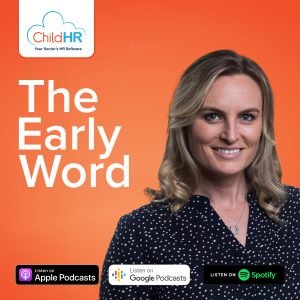
A boy and his teacher are indoors in their kindergarten classroom. They are building with blocks together.
Mental illness in the workplace is a growing problem. Mental health injury claims are going up, and lost productivity due to mental health problems, including time off and slowed work, is a huge issue. However, 85% of workers believe that their employer is more likely to give them time off for a cold or the flu than mental health issues. This results in many employees calling in ‘sick’ and claiming other problems.
Many employees fear that they may be discriminated against (90%) or even fired (78%) if they admit to a mental health problem. Despite this, one in five Australians has taken time off work in the past year to manage a mental health problem. Many of those people were likely to be dishonest or, of course, use other forms of paid time off, such as annual leave. The Disability Act of 1992 makes it illegal to discriminate against employees who have a mental health condition. However, many employees do not know it exists or does not believe mental health problems count.
How Employers Can Help
Responsibilities of employers include supporting the mental health of their workers. This is particularly true in stressful jobs such as early learning service. Risk factors include being on your feet most of the day, the numerous and often conflicting tasks that have to be accomplished, and expectations from multiple sources.
Mental health days are important not only for those with a recognised condition but for anyone with a stressful job. Allowing employees to take planned mental health days is a better system than random ‘sickies.’ Planning time off means that the shift can be covered.
A lot of employers also discourage their employees, often not intentionally, from using their full amount of annual leave. Although it’s often desirable to make sure holidays are staggered, taking the full amount of annual leave you are entitled to is a great way to prevent burnout.
If a worker discloses a mental health condition, make sure it is kept confidential. At this point, accommodations can be discussed, such as a change in shift, provision for medical appointments, time working in the office, etc. Mental health conditions should be treated the same as any other illness. Finally, have a policy to deal with a worker having a mental health crisis.
Improving the Workplace
There are also things employers can do to improve the workplace environment. Here are some examples, some early learning service specific, others not.
- Provide a soundproof break room so workers can get a complete break from the noisy children. Make sure people take their scheduled breaks.
- Provide a separate room for meetings and ‘adult conversations’.
- Have proactive conversations about mental health and encourage people to talk about their problems. Make sure these conversations are not limited to ‘R U Okay? Day’.
- Provide access to free, confidential counselling.
- Have a transparent and fair complaint process for bullying and harassment.
- Specifically include mental health days as one of the grounds for sick leave. It helps if managers and supervisors are not afraid to take a mental health day themselves.
- Provide information and education on things like getting enough sleep, mindfulness, and meditation, alcohol intake, etc.
- Offer financial counselling. Many early learning service workers are living pay cheque to pay cheque.
- Put supervisors through mental health awareness training.
- Make sure that any discussions about mental health are kept private and confidential.
- Hire enough workers that everyone’s workload is manageable.
- Listen to employees on what they want and what would make their job easier.
How ChildHR Can Help
Employers can also influence stressors such as working excessive hours, taking work home, lack of support and interpersonal conflict or bullying. There are other sources of stress that are key. One of these is unrealistic or unclear performance targets. This is one of the ways in which ChildHR can help. The system is designed to encourage employee input into professional development targets. This allows for more feedback and encouraging employees to speak up if they feel overwhelmed. It also helps keep performance management more structured and easier to follow.
Another way in which ChildHR can help reduce workplace stress is by helping people keep track of the renewals of their certifications. Also, by encouraging records of conversations, it can help ensure that accommodations a worker may need are followed and that discussions about mental health issues are properly documented. And, finally, it makes it easier to ask for personal leave or annual leave as needed. ChildHR is a great system for early learning service providers to manage their workforce, including helping to reduce stress and mental health issues in the workplace.
